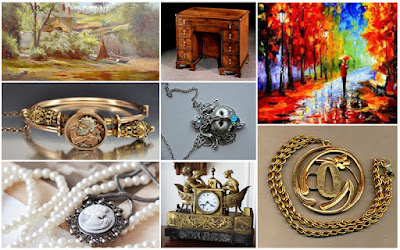Have you inherited a painting or found one at an estate sale? If yes, you could be thinking about how valuable it could be!
It is imperative to find the worth of a painting. Along with that, you should also authenticate its authenticity. However, it could be a difficult task.
Here, we will inform you about the process you need to follow to determine the value of a painting. Also, we will let you know about the best ways to determine its authenticity. So, reading this blog post is vital whether you are looking to buy or sell a patient or are an art enthusiastic:
Key Steps to Follow to Find Out a Painting's Value
1. Assessing Painting Value
• As a part of it, you should always do detailed research on the artist associated with the painting. It is essential to look for their biography, any awards they have gotten in the past, and exhibition history. Finally, you should ensure that the artist is renowned and has done a lot of fantastic work.
• Another important thing is to get yourself well conversant with the artist's artistic style. You should also know about the period in which your particular painting was created. It's because the value of the artwork is heavily impacted by different periods and styles.
• You should also effectively check the ownership history or provenance of the art piece you have in your hand. Paintings whose history is well-documented are more valuable.
2. Determining Painting's Worth
• It is crucial to get in touch with professional appraisers or art experts to find out the actual value of your painting. Their experience and knowledge in this field can offer you valuable insights.
• Both the quality and condition of the painting play a key role in deciding the painting's worth. You are expected to get higher prices for artwork with superior craftsmanship and good condition.
• It is also a good idea to seek past auction records of similar paintings from the same period and artist. It will help in evaluating the value of your painting.
3. Identifying Authentic Paintings
• To ensure that your painting is authentic, you should check whether it possesses the artist's signature. Genuine ones will always have this.
• It would help if you always looked for certificates of authenticity, documentation, etc. which will provide you with the ownership history of the painting. Authentic ones will have verifiable provenance.
• Make sure to familiarize yourself with the techniques and materials employed by the artist to create the painting. If the painting you have is genuine, it will reflect the known methods and materials of the artist.
4. Authenticating Artwork
• It is essential for you to get the opinion of professional art authentication services or art experts who possess comprehensive knowledge of art techniques, history, and a lot more. So, it means that they have great proficiency in authenticating artwork.
• You can even consult artwork databases or catalogs documenting the artist's work. It is a great way to confirm the painting's authenticity.
• Scientific analysis is another way to authenticate antique artwork. Different techniques can be used, like radiography and spectroscopy.
Final Thoughts
Thus, finding out the authenticity and value of a painting necessitates detailed research, careful examination, etc. You may often have to approach an art professional for this.
It is important to note that evaluating painting authenticity is regarded as a nuanced procedure, so getting professional guidance will help you a lot.



